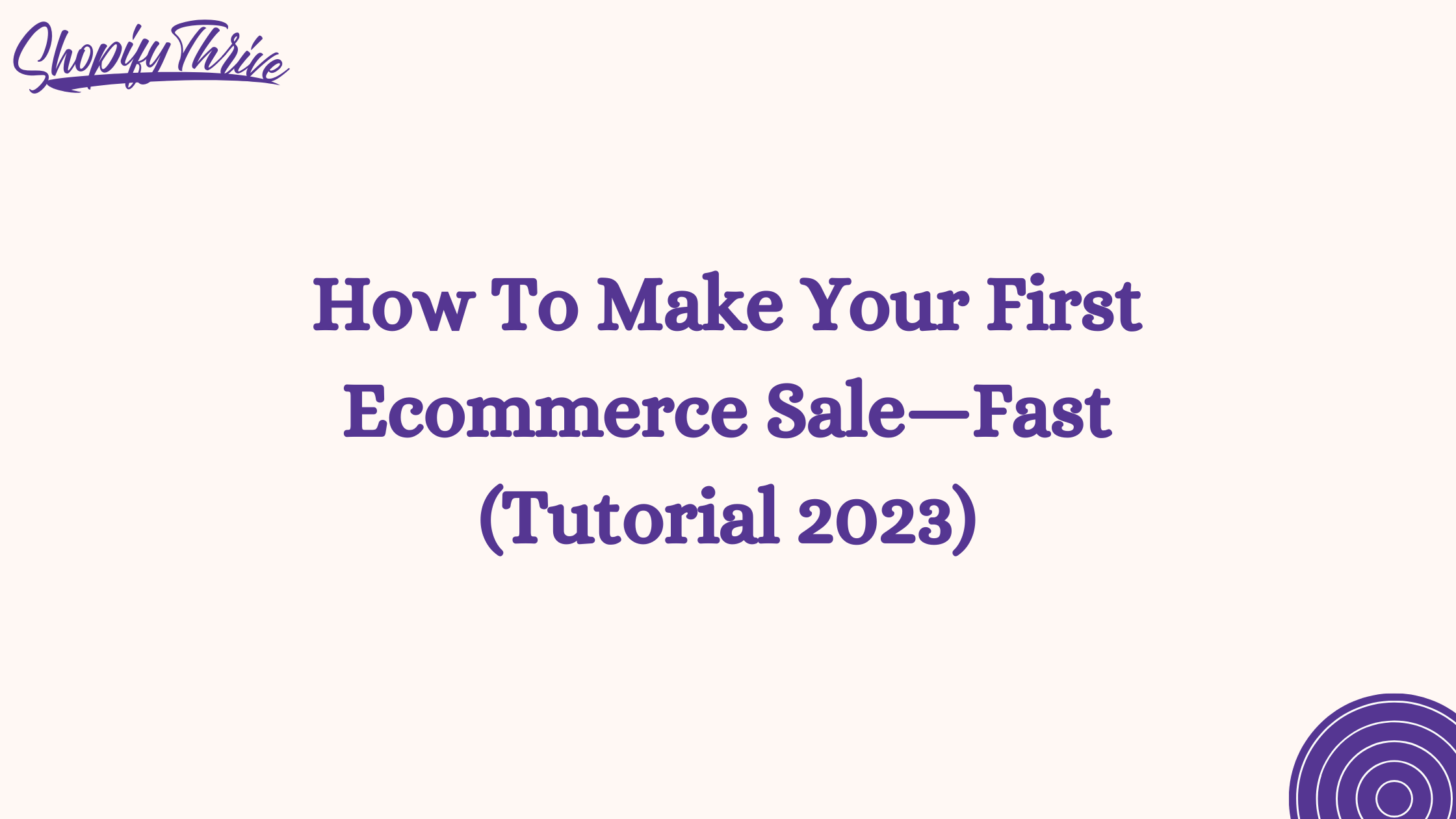
Noor
How To Make Your First Ecommerce Sale—Fast (Tutorial 2023)
- May 23, 2023
- , 5:02 pm
- , Shopify Tips
Introduction
Congratulations on starting your ecommerce journey! Making your first sale is an exciting milestone that marks the beginning of your online business success. In this comprehensive tutorial, we will guide you through the process of making your first ecommerce sale quickly and efficiently. Whether you’re selling products or services, we’ve got you covered with practical strategies and actionable tips. Let’s dive right in and get ready to accelerate your path to ecommerce success!
2. Understanding Your Target Audience
- Identify your target market and create detailed buyer personas.
- Conduct market research to understand their needs, preferences, and pain points.
- Use customer surveys, social media listening, and competitor analysis to gain insights.
3. Building a Compelling Online Store
- Choose a user-friendly ecommerce platform like Shopify.
- Select an appealing theme that aligns with your brand and product offerings.
- Customize your store’s design, including logo, colors, and typography.
- Create clear and intuitive navigation to help visitors find what they need.
4. Optimizing Product Pages for Conversions
- Write persuasive and descriptive product titles and descriptions.
- Use high-quality product images and videos to showcase your offerings.
- Highlight key features, benefits, and unique selling points.
- Include social proof elements such as customer reviews and ratings.
5. Driving Targeted Traffic to Your Store
- Conduct keyword research to optimize your store for search engines.
- Implement search engine optimization (SEO) strategies such as meta tags and URL optimization.
- Run targeted paid advertising campaigns on platforms like Google Ads and Facebook Ads.
- Utilize search engine marketing (SEM) to drive traffic through paid search results.
6. Creating an Effective Marketing Strategy
- Define your marketing goals and objectives.
- Develop a comprehensive marketing plan that includes various channels and tactics.
- Set a budget for your marketing activities and allocate resources accordingly.
- Continuously measure and analyze the performance of your marketing campaigns.
7. Leveraging Social Media Channels
- Identify the social media platforms where your target audience is most active.
- Create engaging profiles and share valuable content regularly.
- Use social media advertising to reach a wider audience.
- Engage with your followers, respond to comments, and run social media contests or promotions.
8. Harnessing the Power of Influencer Marketing
- Identify influencers in your niche who have a genuine connection with your target audience.
- Collaborate with influencers to promote your products or store.
- Offer unique discount codes or affiliate programs to incentivize their followers.
9. Implementing Email Marketing Campaigns
- Build an email list by offering incentives such as discounts or exclusive content.
- Send personalized emails to nurture leads and encourage conversions.
- Use automated email sequences to recover abandoned carts and re-engage customers.
- Segment your email list to deliver targeted and relevant content.
10. Utilizing Content Marketing to Boost Sales
- Create valuable and informative content related to your industry or products.
- Start a blog on your store and publish articles regularly.
- Share your content through social media and email marketing.
- Optimize your content for search engines to attract organic traffic.
11. Maximizing Conversion Rate Optimization (CRO)
- Analyze user behavior on your website using tools like Google Analytics.
- Optimize your website’s design, layout, and call-to-action buttons.
- Conduct A/B testing to identify the most effective elements.
- Improve site speed and mobile responsiveness for better user experience.
12. Providing Exceptional Customer Service
- Offer multiple customer support channels such as live chat, email, and phone.
- Respond promptly to customer inquiries and provide helpful solutions.
- Implement a hassle-free return and refund policy.
- Encourage customer feedback and reviews to build trust and loyalty.
13. Analyzing and Refining Your Approach
- Monitor key performance indicators (KPIs) such as conversion rate, average order value, & customer acquisition cost.
- Use data analytics tools to gain insights into customer behavior and preferences.
- Test and iterate your marketing strategies based on data-driven insights.
- Stay updated with industry trends and adapt your approach accordingly.
Conclusion
By following the strategies and tactics outlined in this tutorial, you are equipped with the knowledge and tools to make your first ecommerce sale quickly. Remember, success in ecommerce requires continuous learning, adaptation, and persistence. Implement these strategies, monitor your progress, and refine your approach as you gain more experience. Best of luck on your ecommerce journey!
Ready to transform and grow your shopify brand?
See why companies like Lash Artisan, Lust For Lashes, joemetry.co and more
launched their shopify Brand With ShopifyThrive.
